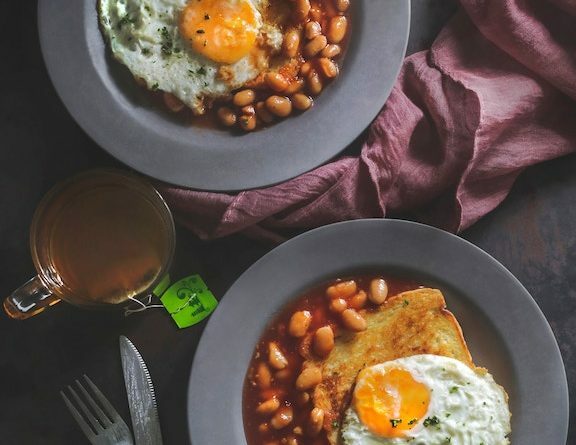Molybdenum: Reference and Dietary Sources
On this page
Abstract
In this article, we describe:
- the major purposes of this specific nutrient in the human body,
- its experimentally confirmed health uses,
- conventional ways to estimate nutrient status,
- nutrient’s toxicities and deficiencies,
- experimentally confirmed and approved levels of the nutrient intake for different demographics,
- dietary sources of the nutrient.
Introduction
Molybdenum is an essential trace element that is a structural constituent of molybdopterin, a cofactor synthesized by the body and required for the function of enzymes metabolizing sulfur-containing amino acids, purines and pyrimidines, as well as drugs and toxins.
Molybdenum appears to be absorbed via a passive nonmediated process. The kidneys are the main regulators of molybdenum levels in the body and are responsible for its excretion. Molybdenum, in the form of molybdopterin, is stored in the liver, kidney, adrenal glands, and bone.
Molybdenum deficiency is rare and status is not assessed in clinical settings, except in people with a genetic mutation that prevents the synthesis of molybdopterin and therefore of sulfite oxidase. Urinary molybdenum does not reflect molybdenum status. Acute molybdenum toxicity is rare, but it can occur with industrial mining and metalworking exposure.
Nutri-IQ tool provides easy and convenient way to analyze patient’s bothersome symptoms and relate them to nutrients inadequacy (deficiency or toxicity).
Recommended Dietary Allowances (RDAs) for Molybdenum
| Age | Male | Female | Pregnancy | Lactation |
|---|---|---|---|---|
| Birth to 6 months | 2 mcg* | 2 mcg* | ||
| 7–12 months | 3 mcg* | 3 mcg* | ||
| 1–3 years | 17 mcg | 17 mcg | ||
| 4–8 years | 22 mcg | 22 mcg | ||
| 9–13 years | 34 mcg | 34 mcg | ||
| 14–18 years | 43 mcg | 43 mcg | 50 mcg | 50 mcg |
| 19+ years | 45 mcg | 45 mcg | 50 mcg | 50 mcg |
*AI, based on mean molybdenum intakes of infants fed primarily human milk.
Sources of Molybdenum
The top sources of molybdenum are legumes, cereal grains, leafy vegetables, beef liver, and milk. Milk and cheese products are the main sources of molybdenum for teens and children.
The amount of molybdenum in food depends on the amount of molybdenum in the soil and in the water used for irrigation. Drinking water generally contains only small amounts of molybdenum. The amount of information on molybdenum levels in foods is quite limited.
Selected Food Sources of Molybdenum
| Food | Micrograms (mcg) per serving | Percent DV* |
|---|---|---|
| Boiled black-eyed peas, ½ cup | 288 | 640 |
| Pan-fried beef liver, (3 ounces) | 104 | 231 |
| Boiled lima beans, ½ cup | 104 | 231 |
| Plain yogurt, 1 cup | 26 | 58 |
| Milk, 1 cup | 22 | 49 |
| Baked potato, 1 medium | 16 | 36 |
| Cheerios cereal, ½ cup | 15 | 33 |
| Shredded wheat cereal, ½ cup | 15 | 33 |
| Banana, medium | 15 | 33 |
| White rice, cooked, ½ cup | 13 | 29 |
| Whole wheat bread, 1 slice | 12 | 27 |
| Dry roasted peanuts, 1 ounce | 11 | 24 |
| Roasted chicken, 3 ounces | 9 | 20 |
| Soft-boiled lard egg, soft-boiled | 9 | 20 |
| Boiled spinach, ½ cup | 8 | 18 |
| Pan-fried ground beef, 3 ounces | 8 | 18 |
| Dry roasted pecans, 1 ounce | 8 | 18 |
| Sweet yellow corn, cooked, ½ cup | 6 | 13 |
| Cheddar cheese, 1 ounce | 6 | 13 |
| Canned in oil tuna, 3 ounces | 5 | 11 |
| Boiled without skin potato, ½ cup | 4 | 9 |
| Orange, medium | 4 | 9 |
| Boiled green beans, ½ cup | 3 | 7 |
| Carrots, raw, ½ cup | 2 | 4 |
| Asparagus, boiled, ½ cup | 2 | 4 |
- *DV = Daily Value.
- The DV for molybdenum is 45 mcg for adults and children age 4 years and older.
- Foods providing 20% or more of the DV are considered to be high sources of a nutrient, but foods providing lower percentages of the DV also contribute to a healthful diet.
References
- Elson Haas. “Staying Healthy with Nutrition”
- U.S. Department of Health & Human Services: https://ods.od.nih.gov/factsheets/Molibdenum-HealthProfessional/
